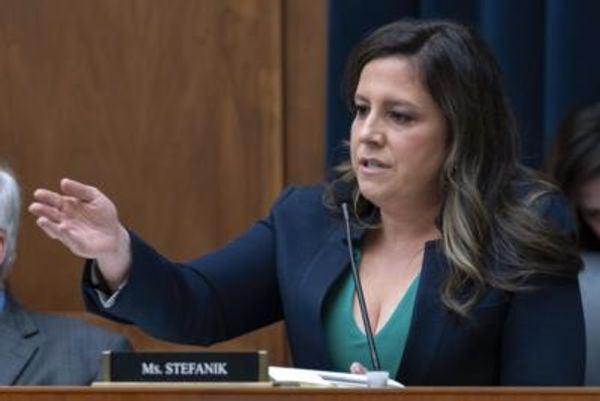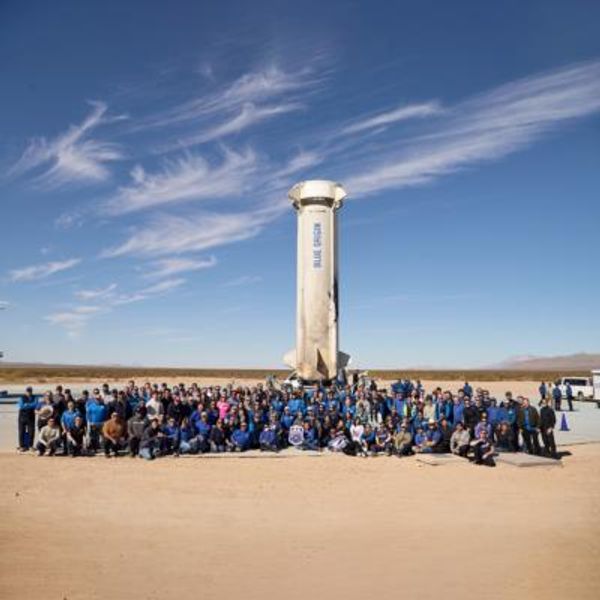
On July 23, Secretary of State Mike Pompeo proclaimed a final sentence on the policy of constructive engagement with China: “We must not continue [the policy] and we must not return to it.” He made that announcement at the presidential library of Richard Nixon, the U.S. president who kicked off the policy nearly five decades ago.
The sentence came as no surprise. The policy of engagement with China had been called into question even before President Donald Trump took office. Since 2010, the ascendance of China as the world’s second largest economic power, in conjunction with its bursting nationalist and sometimes revisionist policy rhetoric, has fed into an emerging narrative that China represents a formidable and threatening adversary. As early as mid-2015, David Lampton of Johns Hopkins University noted that the bilateral relationship was at a tipping point with the erosion of some “critical underlying supports for predominantly positive U.S.-China ties.”
The bipartisan approach crumbled under the Trump administration, which defines China as a revisionist and strategic competitor, and a central challenge to U.S. primacy. Gone are the days of “strategic partnership” or “cooperative partnership.” Liberals, dismayed by the failure of decades of engagement to mold China in America’s likeness, are also convinced that American policy toward China is due for a “reckoning.” Decades of engagement policy, instead of ushering in the desired change in China’s domestic and foreign policy, are now seen as having produced a China that is not only richer and more powerful, but also more repressive and aggressive.
The COVID-19 pandemic has only solidified the support for disengagement with China. The perception of China as the origin of the pandemic, its mishandling of the initial outbreak, and disruption of the global supply chain have led politicians and pundits alike to use the pandemic to demand a “hard decoupling” from China. An antagonism once confined largely to economic and technological issues has now spilled over into areas like public health and personal exchanges. Meanwhile, China’s actions in or rhetoric toward Hong Kong, Taiwan, Xinjiang, and South China Sea have escalated tensions further, as has the American response. If in the pre-pandemic era the Trump administration’s call for disengagement was mainly echoed by the policy community, now it appears to have gained growing public support. A recent Pew survey suggests that roughly two-thirds of American adults have an unfavorable view of China, up nearly 20 percentage points since 2017.
While many of the concerns about China’s rise are valid and legitimate, fear of a Chinese juggernaut makes some critical errors. It takes China’s rise a given, underestimates the strength and resilience of the Chinese Communist Party (CCP), and ignores the significant gains of engagement with China.
Fallacy 1: It takes China’s Rise as a Given
China’s rise is not inevitable. The domestic challenges at home are vast, and growing. My forthcoming book Toxic Politics examines how an environmental health crisis represents one of the most formidable obstacles to China’s international ascendance. Air pollution alone might have cost China as much as 18 percent of its GDP in 2013. Environmental health concerns also hamper China’s efforts to recruit and retain the talent that is essential for global financial hub building; you can offer mega-deals to Silicon Valley stars, but they’d still rather live in California than Beijing. The ensuing economic slowdown increases the likelihood China will slip into the middle-income trap. In James Fallows’ words, “Environmental sustainability in all forms is China’s biggest emergency, in every sense: for its people, for its government, for its effect on the world.”
The magnitude of the environmental health crisis underscores the mounting domestic challenge to Beijing in mobilizing the resources required to fulfill its global ambitions. In 2012, a popular Chinese social media post joked that China is already a superpower in the following areas: pollution, corruption, toxic food, dropout students, stability-maintenance expenses, number of government officials, number of petitioners, and emigration. On top of that, China’s power engines have already been corroded by an unprecedented demographic crisis, characterized by extremely low fertility levels, a rapidly aging society, a shrinking working-age population, and a huge surplus of men.
Preoccupied with domestic issues, China is significantly constrained in pursuing its dream of regaining international greatness. Quality control problems, for example, have hampered China’s “mask diplomacy”—sending PPE and other medical supplies to other countries—and undermined its efforts to recast its image as a leader in the fight against COVID-19. In the same vein, concerns about Beijing using Belt and Road Initiative—China’s most significant 21st century foreign policy initiative – as a backdoor way to outsource pollution, when coupled with the COVID-19 outbreak, have led to potential loss of faith in the “Chinese-style connectivity.”
Indeed, when Pompeo was talking about the threat China posed to the free world, he probably forgot that since 1989, Chinese leaders have been obsessively worried about China itself becoming the target of “peaceful evolution” or “color revolution,” a reference to regime change abetted by the United States. The government’s obsession with sociopolitical stability explains why since 2010 China’s spending on domestic security, including policing and surveillance, has consistently outstripped military spending. And a political system that increasingly equates stability with loyalty to a single man, Xi, is highly subject to flawed decision making, disruption, and shocks.
Fallacy 2: It underestimates CCP Strength and Resilience
In identifying the CCP regime as the archrival of the United States, Secretary Pompeo makes a distinction between it and the “dynamic, freedom-loving” Chinese people. His belief that CCP does not represent the Chinese people might in part derived from his 1989 experience, where there was a genuine gap between Eastern European people and the ruling communist parties. He fails to recognize the extremely strong support CCP receives from the Chinese society. Indeed, even after factoring in the possibility that people may hide their actual feelings out of fear of government retribution, high level of support of the regime in China was identified by various opinion surveys, including a Pew Global Research in 2014, which found 92 percent of Chinese respondents had confidence in Xi.
The disengagement thesis also unwittingly uses the Soviet empire to draw an analogy with China. True, the CCP is “repeating some of the same mistakes that the Soviet Union made,” but the resilience of China’s authoritarian state far surpasses that of the former Soviet Union, which it has already outlasted. Economic historians remind us that even at its peak, the Soviet economy produced considerably less than half of the U.S. GDP. In 2019, however, China’s GDP already amounted to two-thirds of the size of the U.S. economy. The GDP gap continues to shrink in China’s favor. In the second quarter of this year, China registered an economic growth of 3.2 percent compared to the same period a year ago.
Furthermore, Beijing has not lost its ability to respond to a crisis by mobilizing resources and bureaucratic capacities for high priority. The CCP’s commitment to ensuring its survival has been clearly demonstrated during the COVID-19 pandemic. The outbreak caused the most severe social-political crisis since the 1989 Tiananmen crackdown. Instead of allowing the crisis to become China’s “Chernobyl moment,” however, the CCP turned to a combination of traditional vehicles of the party-state and high-tech means (e.g., big data and QR codes) to contain the spread of the virus relatively quickly.
By early April, it was clear that Xi had emerged as a winner in the fight against the outbreak. A series of national online surveys of urban residents in China, conducted by the UCSD China Data Lab, suggested that the pandemic has beefed up government legitimacy. On a scale of 1 to 10, the average level of social trust in the central government increased from 8.23 in June 2019 to 8.87 in May 2020. The percentage of respondents who “agreed” or “strongly agreed” that they prefer living under China’s political system as compared to others increased, too, from 70 percent in June 2019 to 83 percent in May 2020.
Xi might be a “true believer in a bankrupt totalitarian ideology,” as Secretary Pompeo said, referring to Marxism, but the Party nowadays increasingly relies on nationalism instead of communism alone as a pillar of its legitimacy. The failure of the United States to effectively handle the outbreak and its “bullying” approach have pushed nationalism and anti-Americanism to an all-time high in China. Social media outlets in the country are saturated with comments and posts that portray the United States as a diminishing and hostile power. Social injustice, political polarization, and policy paralysis are undermining the United States’ role as a beacon of democracy for China. According to the same UCSD study, Chinese public’s views toward the United States in May 2020 were significantly more negative than those in June 2019. A large percentage of the public, including those who are young and educated, now dislike and despise the United States. There is no natural constituency waiting to turn against the Party with the right prompts.
Don’t get me wrong. I am not suggesting that the Chinese political system is superior to Western liberal democracies. The Chinese system, like the Soviet one, is fundamentally flawed and full of inherent contradictions. But as former Secretary of Defense Robert Gates reminded us, the system started to crumble only after Gorbachev took away the fear and terror it depends on to survive. However, Xi is anybody but Gorbachev, and there is no indication that the Chinese regime will collapse anytime soon. That is why we need to keep the competition peaceful and manageable. But decoupling policy not only risks a new Cold War, but also increases the chances of an actual war that results from an accidently sparked conflict involving the two militaries. The United States may still win a future cold (or even hot) war with China, but the cost would be way too high to justify considering it a viable policy option.
Fallacy 3: It Ignores the Significant Gains of Five Decades of Engagement
U.S. engagement with China has done more than the advocates of a disengagement policy are willing to acknowledge in shaping China’s domestic and foreign policy. In Toxic Politics, I explain how the United States, through its diplomatic mission in China, played a critical role in elevating the control of PM2.5 emissions onto the policy agenda and indirectly pressuring the Chinese government to take decisive action to improve air quality. The state commitment to pollution control, in turn, has enabled China to adopt a more cooperative approach toward international efforts to tackling climate change.
U.S. engagement with China has also been crucial in expanding U.S.-China cooperation over public health. Shared health concerns challenged both countries to work together to address a wide array of global health issues, including HIV/AIDs, pandemic flu, and health-related development assistance. During the H7N9 outbreak, disease control agencies in both countries collaborated closely to share epidemiological data and conduct joint research on the virus. During the 2014 Ebola outbreak in West Africa, the two countries worked together for the first time to address a disease outbreak in a third country.
Constructive engagement also provided incentives to Beijing to sign multilateral agreements it had previously been reluctant to join. It acceded to the Nuclear Nonproliferation Treaty in 1992, signed the Comprehensive Nuclear Test Ban Treaty in 1996, and joined the International Covenant on Civil and Political Rights (ICCPR) in 1998. During the financial crisis of 2007-2008, Beijing China echoed Washington’s call for a large, coordinated fiscal stimulus.
Equally important, U.S. engagement with China had created a pro-America mentality in the Chinese government and the public, at least until the new nationalist surge only recently. Previously, Chinese leaders might denounce U.S. values or system, but that did not prevent them from sending their children to American colleges. The national infatuation of American education explains why China until 2019 remained the largest source of international students in the United States. A disengagement policy risks alienating liberal-minded Chinese elite who could be important potential allies in the United States competition with China. To make matters even worse, rather than inducing change favored by the United States, a disengagement policy will only drive 1.4 billion people to live in “angry isolation,” a scenario that President Richard Nixon wanted to avoid in the late 1960s.
An Alternative Approach: Contingent and Comprehensive Engagement
The purpose here is not to call for a return to Obama-era engagement, which is neither feasible (because of the changing political landscape) nor necessary (because of the loopholes in the policy itself). Rather, it suggests the need to “reboot” the policy to meet new challenges that never were envisaged by its founders. A more balanced and flexible alternative to the hard-nosed zero-sum approach toward China is a “contingent and comprehensive engagement” strategy.
The new strategy recognizes the limits in any U.S. power to force changes on China, but does not allow disputes or disenchantment with the country to prevent them from working closely with it in areas where there is a convergence of interests or overlapping responsibilities. Indeed, even in areas of frontier science where their national interests diverge, such as artificial intelligence and biotechnology, the two countries are still in “near-perfect alignment” on the need to coordinate and prevent abuse. U.S. engagement in such areas does not prevent change in U.S. policy to respond to challenges from China in other arenas, but would make policy alterations more effective by evincing an American sincerity and commitment that current U.S. overtures have lacked and giving China a continuing stake in the bilateral relationship.
To balance competition and cooperation, the United States should certainly still respond firmly and decisively on issues where its national interest is directly under threat, such as intellectual property rights or the South China Sea. In doing so, America should avoid any temptation to imitate China’s nondemocratic methods or overreact to its influence in ways that undercut its true advantage.
In his famous “X” Article, George Kennan stressed the need to sustain the unique advantages of the United States in dealing with the Soviet threat. According to him, an effective anti-Soviet strategy hinged upon the degree to which the United States could create the impression of a country “which knows what it wants, which is coping successfully with the problem of its internal life and with the responsibilities of a World Power, and which has a spiritual vitality capable of holding its own among the major ideological currents of the time.” Instead of pursuing a “whole of society approach” against Beijing’s “whole of government” approach—which is reminiscent of the Red Scare era of the 1950s—we should invest more in rebuilding our ailing democracy and infrastructure.
Talking about forging cooperative relationships with China at a moment when bashing Beijing is at a fever pitch might seem ill-timed. U.S. foreign policymakers, rather than providing antidotes to the increasingly poisonous atmosphere of a “new red scare,” have fueled a cytokine storm that overproduces anti-China immune cells in the U.S. body politic when exposed to looming China challenges. But to avoid being intoxicated by the dangerous air of self-approbation and self-complacency in Washington, the United States—more than ever—must practice empathy, humility, and broad, balanced thinking.







